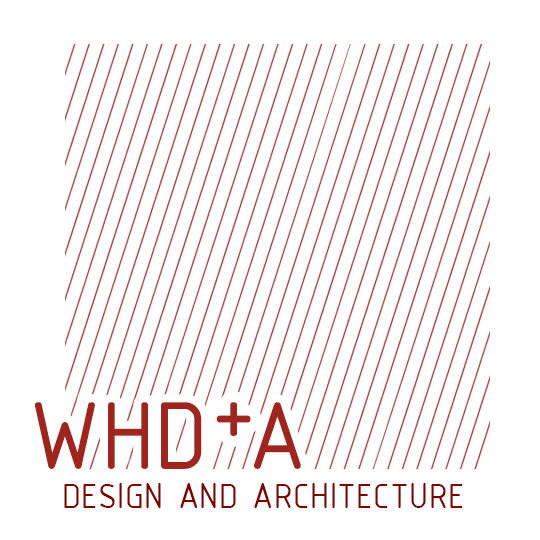Architectural Phase 5 - Contractor Selection
This page is the fith part of the Architectural Phases series. If you are getting a bit lost, that’s ok - feel free to backtrack to the Architectural Process page.
By this stage Architectural Phase 4 - Construction Documentation should be complete. By now the Construction Documents should be finished, and the Building Surveyor should be more or less satisfied they could issue a Building Permit for the proposal. The project is ready to be put to the market to seek quotes from suitably qualified and experienced Builders, so the client can sign a building contract with them direct.
Contractor Selection Methods
In our office, there are 2 main ways to do this.
1 - Tendering
We would prepare our own prospective builder tender list for between 3 – 6 builders (depending on the size of the project), and tender this for 1 month to seek an Lump Sum offer for the Cost of works, and Duration of Contract.
We would try to find builders who are of a similar size to one another, are suitably qualified, experienced and registered, but also have expressed interest in the project. At the end of the Tender, we would assess the offers received and make a recommendation to the client which ones to outright reject, and which one to enter into negotiations with to sign a contract.
2- Direct Negotiation
If there is a preferred Builder, seek a Lump Sum offer for the works with them direct, for the Cost of Works, and Duration of Contract.
How long does this take?
If you tender a project, usually this runs for 1 month. During this process the architect might have to answer some questions, supply some ancillary / updated design drawings, provide clarifications and the like. They would do so fairly to all Tenderers, because we want to be able to receive genuine offers so that we are comparing apples with apples. Also part of this is the question of fairness, we want to…
Run the one fair race, only once!
After a tender, we would allow between 2 – 4 weeks to assess the tenders, report and recommend back to the client which one should be awarded the project, and for any negotiations to occur if say there are late design changes (to perhaps bring the cost of works down).
Direct Negotiation on the other hand is a little more loose, it might take between 2 – 4 weeks to finally come to an offer from the Contractor to provide a Lump Sum cost, and duration of works. There would still be a thorough review by our office to advise the client on the merits of the offer as part of our role as Independent Advisor to the client.
Tender or Direct Negotiation, which is better?
There are a lot of architects (and builders) with differing opinions and experiences with this topic. Both Tendering and Direct Negotiation have their positives and negatives. We wrote a blog post on Early Contractor Involvement which might interest you for an in-depth look at this.
Direct Negotiation might have a TIME saving, but it doesn’t allow to test the market – there may be other Builders who could provide different offers having regard to COST, TIME and QUALITY.
Direct Negotiation allows for early builder involvement to assist with commenting on design, buildability and costing matters, and it is possible this could happen in Phase 2 Sketch Design and/or Phase 3 Design Development. I would say that is QUALITY is the priority for the project, Direct Negotiation is a good way to work with a builder who, perhaps has a track record on bespoke architectural projects and has access to high-quality tradespersons to achieve this result - but it might not be the cheapest way to get there.
There is a question of ‘fairness’ to be answered for if you were to involve a builder in the earlier design phases. I would say either you as client (and me as architect) would have to be fairly committed to the project, and very committed to the builder – they are offering their TIME to provide advice on buildability and costing matters, and I think this is worth something. A very wise and successful architect once said this to me, and in any dealings in the commercial world this saying to me rings true….
TIME IS OUR CURRENCY
If I was a builder giving up my time (and therefore, my money) before having a signed contract on my desk, I would be strongly expecting to have this project in the bag!
If say neither client (or architect) were committed to the Builder, I think it’s perfectly reasonable that they are paid for their time, to avoid any potential conflict if say you did want to go to a tender later on. (And you would probably have to EXCLUDE your earlier builder from this list, to avoid a suggestion of offering an unfair advantage).
To avoid any of the above perceptions of unfairness / bias, conducting a Tender, I feel, is a much cleaner way to get pricing. As long at the tender process is being conducted fairly, there is every opportunity to give Builders the chance to put forward their best offer, without fear or favour. Then your architect can advise you in which offer they think is best, and you can make up your own mind based on what is presented.
* * * * *
With the prices received, the finer details on the offer resolved between the client and the builder, and a signed contract the project is ready to start on site in the next Architectural Phase 6 - Construction Period Services.
Redmond Hamlett is a Director (Project Architect) with WHDA. You can get in touch with Redmond on 03 7020 5784.

